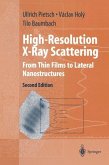This multiauthor book written by world-wide recognized leaders of their particular fields and edited by the recipient of the Max-Born Award and Medal 2006 Professor Dieter Bimberg reports on the state of the art of the growing of quantum dots, the theory of self-organised growth, the theory of electronic and excitonic states, optical properties and transport in a variety of materials. It covers the subject from the early work beginning of the 1990s up to 2006. The topics addressed in the book are the focus of research in all leading semiconductor and optoelectronic device laboratories of the world.
Dieser Download kann aus rechtlichen Gründen nur mit Rechnungsadresse in A, B, BG, CY, CZ, D, DK, EW, E, FIN, F, GR, HR, H, IRL, I, LT, L, LR, M, NL, PL, P, R, S, SLO, SK ausgeliefert werden.
Hinweis: Dieser Artikel kann nur an eine deutsche Lieferadresse ausgeliefert werden.
"This book focuses on the physics of quantum dots. It offers a very broad perspective, including growth of dots ... and various applications such as dots for electronic memory and single-photon generation. ... It is an overview where every chapter is ... self-contained entry written by a different set of authors. ... The editor ... has done an outstanding work in selecting the most important works on nanostructures coming from this center of excellence, and presenting them in a compact, well-illustrated and readable volume." (Jacques Tempere, Belgian Physical Society Magazine, Issue 2, June, 2009)









